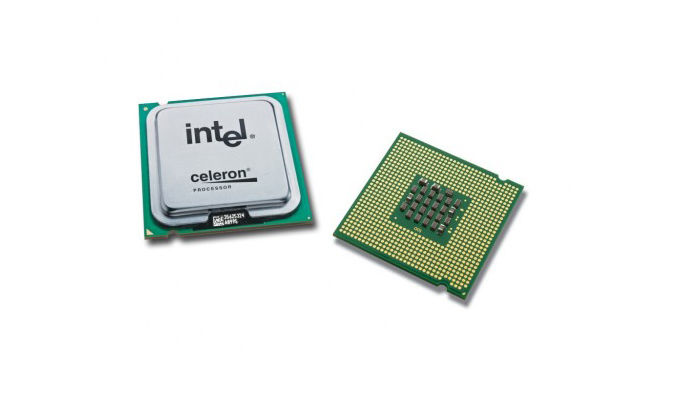
Drajver Intel Celeron Cpu G540
Bus Speed A bus is a subsystem that transfers data between computer components or between computers. Types include front-side bus (FSB), which carries data between the CPU and memory controller hub; direct media interface (DMI), which is a point-to-point interconnection between an Intel integrated memory controller and an Intel I/O controller hub on the computer’s motherboard; and Quick Path Interconnect (QPI), which is a point-to-point interconnect between the CPU and the integrated memory controller. Intel® Optane™ Memory Supported ‡ Intel® Optane™ memory is a revolutionary new class of non-volatile memory that sits in between system memory and storage to accelerate system performance and responsiveness. When combined with the Intel® Rapid Storage Technology Driver, it seamlessly manages multiple tiers of storage while presenting one virtual drive to the OS, ensuring that data frequently used resides on the fastest tier of storage. Intel® Optane™ memory requires specific hardware and software configuration. Visit for configuration requirements.
Enhanced Intel SpeedStep® Technology Enhanced Intel SpeedStep® Technology is an advanced means of enabling high performance while meeting the power-conservation needs of mobile systems. Conventional Intel SpeedStep® Technology switches both voltage and frequency in tandem between high and low levels in response to processor load. Enhanced Intel SpeedStep® Technology builds upon that architecture using design strategies such as Separation between Voltage and Frequency Changes, and Clock Partitioning and Recovery. All information provided is subject to change at any time, without notice. Intel may make changes to manufacturing life cycle, specifications, and product descriptions at any time, without notice. The information herein is provided 'as-is' and Intel does not make any representations or warranties whatsoever regarding accuracy of the information, nor on the product features, availability, functionality, or compatibility of the products listed.
Please contact system vendor for more information on specific products or systems. Intel classifications are for informational purposes only and consist of Export Control Classification Numbers (ECCN) and Harmonized Tariff Schedule (HTS) numbers.
The range of scores (95th - 5th percentile) for the Intel Celeron G540 is just 12.1%. This is a relatively narrow range which indicates that the Intel Celeron G540 performs reasonably consistently under varying real world conditions.
Any use made of Intel classifications are without recourse to Intel and shall not be construed as a representation or warranty regarding the proper ECCN or HTS. Your company as an importer and/or exporter is responsible for determining the correct classification of your transaction. Refer to Datasheet for formal definitions of product properties and features. ‡ This feature may not be available on all computing systems. Please check with the system vendor to determine if your system delivers this feature, or reference the system specifications (motherboard, processor, chipset, power supply, HDD, graphics controller, memory, BIOS, drivers, virtual machine monitor-VMM, platform software, and/or operating system) for feature compatibility.
Functionality, performance, and other benefits of this feature may vary depending on system configuration. System and Maximum TDP is based on worst case scenarios. Actual TDP may be lower if not all I/Os for chipsets are used. “Announced” SKUs are not yet available. Please refer to the Launch Date for market availability. See for more information including details on which processors support Intel® HT Technology.
Some products can support AES New Instructions with a Processor Configuration update, in particular, i7-2630QM/i7-2635QM, i7-2670QM/i7-2675QM, i5-2430M/i5-2435M, i5-2410M/i5-2415M. Please contact OEM for the BIOS that includes the latest Processor configuration update. Intel processor numbers are not a measure of performance. Processor numbers differentiate features within each processor family, not across different processor families. See for details.
Processors that support 64-bit computing on Intel® architecture require an Intel 64 architecture-enabled BIOS. Max Turbo Frequency refers to the maximum single-core processor frequency that can be achieved with Intel® Turbo Boost Technology. See for more information. 